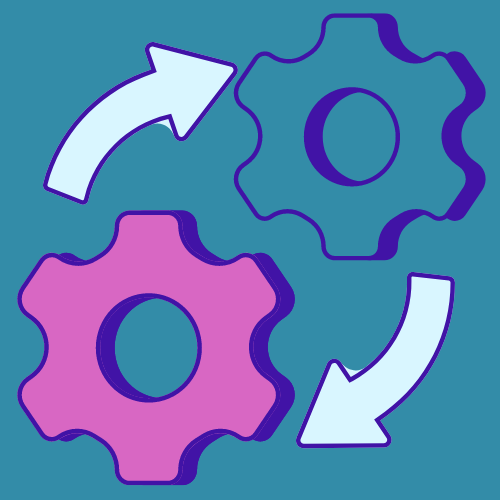- Continuous Learning
Navigate the AI Learning Curve
Identify AI opportunities in your current workflows and tech stack.

Start Slow - Gain Momentum
Adopt AI at your own pace. A structured approach allows you to take small but impactful steps toward AI literacy.

Maximize AI - Minimize Disruption
Integrate AI solutions and harness its power to gain efficiencies, improve decision-making, and drive business growth.

Get Ahead - Stay Ahead
You've achieved AI literacy. Now, explore and experiment. You've got this!


Piloting AI
Test, learn from, and adopt AI solutions in a controlled environment before full-scale implementation.
Individuals and practitioners can pilot AI and build AI literacy with the Use Case Model. The Problem-Based Model is ideal for director-level roles, and for those in an organization's AI Council.

Adopting AI
Understand where AI can address specific problems or create value. Efficiency, for example, is one of the most frequently cited benefits of adopting AI. Examine your workflows and existing tech stacks for opportunities to integrate AI solutions. Seek AI champions within your organization and collaborate on related initiatives.
Adopting AI within an organization involves a strategic, structured approach. Create a roadmap to guide the process.

Integrating AI
Successfully integrating AI solutions into existing workflows and systems ensures they align with business processes and objectives; to reduce costs and drive business growth. Integrating AI is a gradual process that involves exploration, experimentation, and execution. In that order.
"Frame - Focus - Follow through" is a model 3D CommunicationsAI uses to build and implement strategies. Schedule a free 20-minute consultation to talk about how you can create a strategy for integrating AI into your operations.

AI Assistants
If you have used Siri, Alexa or Google Assistant, you have used an AI Assistant. These software programs use natural language processing (NLP) to answer questions, provide recommendations, and execute commands.
AI Assistants focus on understanding user inputs.

Generative AI
These are artificial intelligence systems that use machine learning models and are trained on large datasets. They generate new, original content based on patterns.
Generative AI models are designed for generating content, including images and music.

Predictive AI
This type of AI analyzes large datasets to make forecasts based on historical information. Patterns and relationships are the basis for this type of analysis.
Predictive AI is widely used in business for predicting outcomes and planning strategies.


